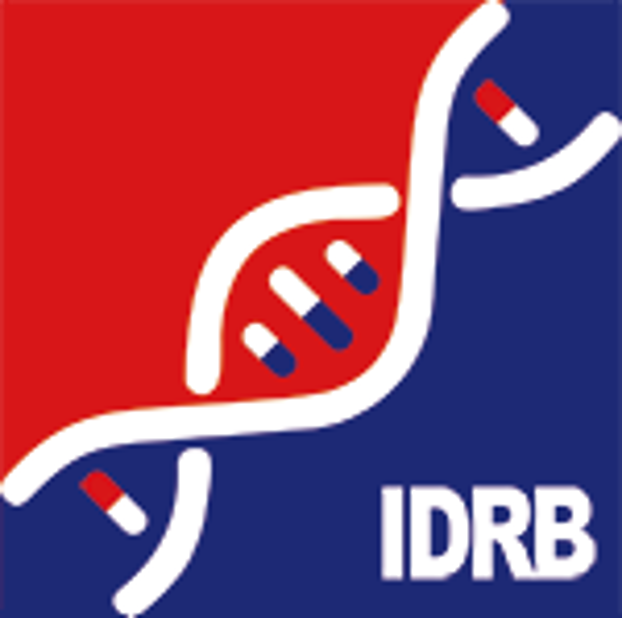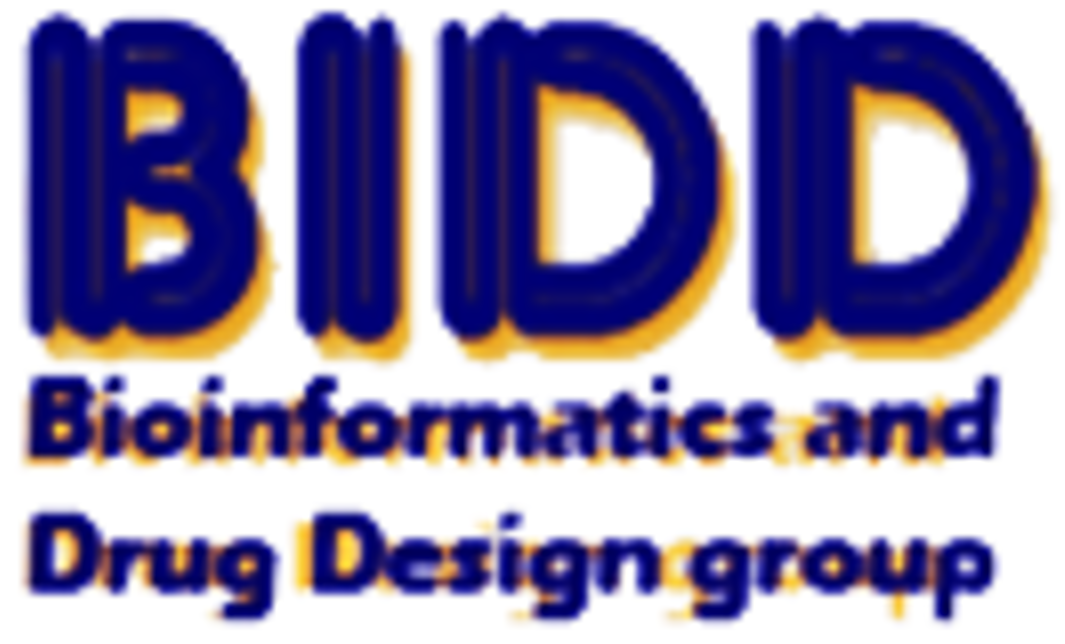Target Information
| Target General Infomation | |||||
|---|---|---|---|---|---|
| Target ID |
T17758
|
||||
| Former ID |
TTDC00312
|
||||
| Target Name |
Urokinase-type plasminogen activator
|
||||
| Gene Name |
PLAU
|
||||
| Synonyms |
U-plasminogen activator; UPA; PLAU
|
||||
| Target Type |
Successful
|
||||
| Disease | Breast cancer [ICD9: 174, 175; ICD10: C50] | ||||
| Cerebrovascular ischaemia [ICD9: 434.91; ICD10: I61-I63] | |||||
| Cancer [ICD9: 140-229; ICD10: C00-C96] | |||||
| Deep venous thrombosis; Pulmonary embolism; Myocardial infarction [ICD9: 410, 415.1, 437.6, 444.9, 453, 453.40, 671.5, 671.9; ICD10: I21, I22, I26, I74, I80-I82, I80.2, I82, O88, T79.0-T79.1] | |||||
| Myocardial infarction; Thrombolysis [ICD9:410, 415.1, 434.91, 459.9; ICD10: I21, I22, I21-I22, I26, I61-I63, I99.9] | |||||
| Myocardial infarction [ICD9: 410; ICD10: I21, I22] | |||||
| Myocardial ischemia; Reperfusion injury [ICD9: 459.89; ICD10: I99.8] | |||||
| Myocardial hypertrophy [ICD10: I51.7] | |||||
| Solid tumours [ICD9: 140-199, 210-229; ICD10: C00-D48] | |||||
| Thromboembolism [ICD9: 437.6, 453, 671.5, 671.9; ICD10: I80-I82] | |||||
| Thrombin deficiency [ICD9: 437.6, 444.9, 453, 671.5, 671.9; ICD10: I74, I80-I82, I82, O88, T79.0-T79.1] | |||||
| Unspecified [ICD code not available] | |||||
| Function |
Specifically cleaves the zymogen plasminogen to form the active enzyme plasmin.
|
||||
| BioChemical Class |
Peptidase
|
||||
| Target Validation |
T17758
|
||||
| UniProt ID | |||||
| EC Number |
EC 3.4.21.73
|
||||
| Sequence |
MRALLARLLLCVLVVSDSKGSNELHQVPSNCDCLNGGTCVSNKYFSNIHWCNCPKKFGGQ
HCEIDKSKTCYEGNGHFYRGKASTDTMGRPCLPWNSATVLQQTYHAHRSDALQLGLGKHN YCRNPDNRRRPWCYVQVGLKPLVQECMVHDCADGKKPSSPPEELKFQCGQKTLRPRFKII GGEFTTIENQPWFAAIYRRHRGGSVTYVCGGSLISPCWVISATHCFIDYPKKEDYIVYLG RSRLNSNTQGEMKFEVENLILHKDYSADTLAHHNDIALLKIRSKEGRCAQPSRTIQTICL PSMYNDPQFGTSCEITGFGKENSTDYLYPEQLKMTVVKLISHRECQQPHYYGSEVTTKML CAADPQWKTDSCQGDSGGPLVCSLQGRMTLTGIVSWGRGCALKDKPGVYTRVSHFLPWIR SHTKEENGLAL |
||||
| Drugs and Mode of Action | |||||
| Drug(s) | Pro-urokinase | Drug Info | Approved | Thrombin deficiency | [1] |
| Urokinase | Drug Info | Approved | Deep venous thrombosis; Pulmonary embolism; Myocardial infarction | [2] | |
| PAI-1 | Drug Info | Phase 4 | Discovery agent | [3] | |
| Amediplase | Drug Info | Phase 3 | Myocardial infarction; Thrombolysis | [4], [2] | |
| Saruplase | Drug Info | Phase 2 | Thromboembolism | [5] | |
| Upamostat | Drug Info | Phase 2 | Breast cancer | [6], [7] | |
| HTU-PA | Drug Info | Phase 1/2 | Cerebrovascular ischaemia | [8] | |
| compound 4 | Drug Info | Clinical trial | Myocardial ischemia; Reperfusion injury | [9], [10] | |
| UK-356202 | Drug Info | Clinical trial | Myocardial hypertrophy | [11] | |
| PAI-2 | Drug Info | Discontinued in Phase 2 | Discovery agent | [12] | |
| WX-UK1 | Drug Info | Discontinued in Phase 1/2 | Solid tumours | [13], [14] | |
| B-428 | Drug Info | Terminated | Cancer | [15] | |
| Inhibitor | (2R)-1-(2,6-dimethylphenoxy)propan-2-amine | Drug Info | [16] | ||
| (3,4-dichlorophenyl)(1H-pyrazol-1-yl)methanone | Drug Info | [17] | |||
| (3-nitro-1H-pyrazol-1-yl)(p-tolyl)methanone | Drug Info | [17] | |||
| (4-bromo-1H-pyrazol-1-yl)(p-tolyl)methanone | Drug Info | [17] | |||
| (4-guanidino-benzyl)-carbamic acid benzyl ester | Drug Info | [18] | |||
| (4-nitro-1H-pyrazol-1-yl)(o-tolyl)methanone | Drug Info | [17] | |||
| (4-nitro-1H-pyrazol-1-yl)(phenyl)methanone | Drug Info | [17] | |||
| 1-benzoyl-N-phenyl-1H-pyrazole-3-carboxamide | Drug Info | [17] | |||
| 1-guanidino-7-isoquinolinesulphonamide | Drug Info | [19] | |||
| 1-guanidino-N-phenyl-7-isoquinolinesulphonamide | Drug Info | [19] | |||
| 1-[4-(2-oxo-2-phenylethyl)phenyl]guanidine | Drug Info | [16] | |||
| 2-(2-Hydroxy-phenyl)-1H-indole-5-carboxamidine | Drug Info | [20] | |||
| 2-amidino-4-iodobenzothiophene | Drug Info | [21] | |||
| 2-Amino-5-Hydroxy-Benzimidazole | Drug Info | [22] | |||
| 2-nas-phe(3-am)-4-(2-guanidinoethyl)piperidine | Drug Info | [23] | |||
| 4-chloro-1-guanidino-7-isoquinolinesulphonamide | Drug Info | [19] | |||
| 4-iodobenzo[b]thiophene 2-carboxamidine | Drug Info | [24] | |||
| 4-Iodobenzo[B]Thiophene-2-Carboxamidine | Drug Info | [16] | |||
| 4-methoxy-N'-(2-phenylacetyl)benzohydrazide | Drug Info | [17] | |||
| 5-Methylsulfanyl-thiophene-2-carboxamidine | Drug Info | [21] | |||
| 6-(N-Phenylcarbamyl)-2-Naphthalenecarboxamidine | Drug Info | [22] | |||
| B-428 | Drug Info | [25] | |||
| Benzamidine | Drug Info | [22] | |||
| compound 4 | Drug Info | [9] | |||
| CRA_10655 | Drug Info | [16] | |||
| CRA_8696 | Drug Info | [16] | |||
| Fucose | Drug Info | [22] | |||
| N-(1-Adamantyl)-N'-(4-Guanidinobenzyl)Urea | Drug Info | [22] | |||
| PAI-1 | Drug Info | [26] | |||
| PAI-2 | Drug Info | [27] | |||
| Recombinant human pro-urokinase | Drug Info | [28] | |||
| Thieno[2,3-B]Pyridine-2-Carboxamidine | Drug Info | [16] | |||
| UK-356202 | Drug Info | [11] | |||
| UPA-targeted oncolytic Sendai virus | Drug Info | [28] | |||
| Upamostat | Drug Info | [6] | |||
| WX-UK1 | Drug Info | [29] | |||
| Activator | Amediplase | Drug Info | [2] | ||
| ATN-658 | Drug Info | [28] | |||
| HTU-PA | Drug Info | [30] | |||
| Saruplase | Drug Info | [5] | |||
| Modulator | ATF-HI-8 | Drug Info | |||
| B-623 | Drug Info | ||||
| Pro-urokinase | Drug Info | [28] | |||
| Urokinase | Drug Info | [31] | |||
| Target Expression Profile (TEP) and Drug Resistance Mutation (DRM) | |||||
| TEP | EXP Info | ||||
| Pathways | |||||
| KEGG Pathway | NF-kappa B signaling pathway | ||||
| Complement and coagulation cascades | |||||
| Transcriptional misregulation in cancer | |||||
| Proteoglycans in cancer | |||||
| MicroRNAs in cancer | |||||
| NetPath Pathway | IL2 Signaling Pathway | ||||
| EGFR1 Signaling Pathway | |||||
| PANTHER Pathway | Blood coagulation | ||||
| Plasminogen activating cascade | |||||
| CCKR signaling map ST | |||||
| Pathway Interaction Database | Beta1 integrin cell surface interactions | ||||
| E2F transcription factor network | |||||
| Beta3 integrin cell surface interactions | |||||
| Osteopontin-mediated events | |||||
| Validated transcriptional targets of AP1 family members Fra1 and Fra2 | |||||
| amb2 Integrin signaling | |||||
| ATF-2 transcription factor network | |||||
| AP-1 transcription factor network | |||||
| Beta2 integrin cell surface interactions | |||||
| Urokinase-type plasminogen activator (uPA) and uPAR-mediated signaling | |||||
| Beta5 beta6 beta7 and beta8 integrin cell surface interactions | |||||
| FGF signaling pathway | |||||
| Reactome | Dissolution of Fibrin Clot | ||||
| WikiPathways | DNA Damage Response (only ATM dependent) | ||||
| Senescence and Autophagy in Cancer | |||||
| Complement and Coagulation Cascades | |||||
| Endochondral Ossification | |||||
| Wnt Signaling Pathway | |||||
| Wnt Signaling Pathway and Pluripotency | |||||
| Blood Clotting Cascade | |||||
| Dissolution of Fibrin Clot | |||||
| Osteopontin Signaling | |||||
| References | |||||
| REF 1 | Drugs@FDA. U.S. Food and Drug Administration. U.S. Department of Health & Human Services. 2015 | ||||
| REF 2 | Emerging drugs in peripheral arterial disease. Expert Opin Emerg Drugs. 2006 Mar;11(1):75-90. | ||||
| REF 3 | ClinicalTrials.gov (NCT00770328) The Effects of Pentoxifylline on PAI-1 in an Obese Population. U.S. National Institutes of Health. | ||||
| REF 4 | Amediplase: CGP 42935, K2tu-PA, MEN 9036. BioDrugs. 2002;16(5):378-9. | ||||
| REF 5 | Pharmacokinetics and pharmacodynamics of saruplase, an unglycosylated single-chain urokinase-type plasminogen activator, in patients with acute myocardial infarction. Thromb Haemost. 1994 Nov;72(5):740-4. | ||||
| REF 6 | Phase II randomised proof-of-concept study of the urokinase inhibitor upamostat (WX-671) in combination with gemcitabine compared with gemcitabine alone in patients with non-resectable, locally advanced pancreatic cancer. Br J Cancer. 2013 Mar 5;108(4):766-70. | ||||
| REF 7 | (http://www.guidetopharmacology.org/) Nucleic Acids Res. 2015 Oct 12. pii: gkv1037. The IUPHAR/BPS Guide to PHARMACOLOGY in 2016: towards curated quantitative interactions between 1300 protein targets and 6000 ligands. (Ligand id: 6497). | ||||
| REF 8 | ClinicalTrials.gov (NCT00418275) Safety Study of a Recombinant Human Plasminogen Activator to Treat Acute Ischemic Stroke.. U.S. National Institutes of Health. | ||||
| REF 9 | Fragment-based discovery of mexiletine derivatives as orally bioavailable inhibitors of urokinase-type plasminogen activator. J Med Chem. 2008 Jan 24;51(2):183-6. | ||||
| REF 10 | (http://www.guidetopharmacology.org/) Nucleic Acids Res. 2015 Oct 12. pii: gkv1037. The IUPHAR/BPS Guide to PHARMACOLOGY in 2016: towards curated quantitative interactions between 1300 protein targets and 6000 ligands. (Ligand id: 6545). | ||||
| REF 11 | Bioorg Med Chem Lett. 2004 Jun 21;14(12):3227-30.Selective urokinase-type plasminogen activator (uPA) inhibitors. Part 3: 1-isoquinolinylguanidines. | ||||
| REF 12 | Trusted, scientifically sound profiles of drug programs, clinical trials, safety reports, and company deals, written by scientists. Springer. 2015. Adis Insight (drug id 800004611) | ||||
| REF 13 | (http://www.guidetopharmacology.org/) Nucleic Acids Res. 2015 Oct 12. pii: gkv1037. The IUPHAR/BPS Guide to PHARMACOLOGY in 2016: towards curated quantitative interactions between 1300 protein targets and 6000 ligands. (Ligand id: 6498). | ||||
| REF 14 | Trusted, scientifically sound profiles of drug programs, clinical trials, safety reports, and company deals, written by scientists. Springer. 2015. Adis Insight (drug id 800012176) | ||||
| REF 15 | Trusted, scientifically sound profiles of drug programs, clinical trials, safety reports, and company deals, written by scientists. Springer. 2015. Adis Insight (drug id 800009078) | ||||
| REF 16 | The Protein Data Bank. Nucleic Acids Res. 2000 Jan 1;28(1):235-42. | ||||
| REF 17 | J Med Chem. 2007 Oct 4;50(20):4928-38. Epub 2007 Sep 12.N-benzoylpyrazoles are novel small-molecule inhibitors of human neutrophil elastase. | ||||
| REF 18 | J Med Chem. 2007 Dec 27;50(26):6638-46. Epub 2007 Dec 1.Small, potent, and selective diaryl phosphonate inhibitors for urokinase-type plasminogen activator with in vivo antimetastatic properties. | ||||
| REF 19 | J Med Chem. 2007 May 17;50(10):2341-51. Epub 2007 Apr 21.Selective urokinase-type plasminogen activator inhibitors. 4. 1-(7-sulfonamidoisoquinolinyl)guanidines. | ||||
| REF 20 | J Med Chem. 2001 Aug 16;44(17):2753-71.Development of serine protease inhibitors displaying a multicentered short (<2.3 A) hydrogen bond binding mode: inhibitors of urokinase-type plasminogen activator and factor Xa. | ||||
| REF 21 | Bioorg Med Chem Lett. 2002 Feb 11;12(3):491-5.Design and synthesis of 4,5-disubstituted-thiophene-2-amidines as potent urokinase inhibitors. | ||||
| REF 22 | How many drug targets are there? Nat Rev Drug Discov. 2006 Dec;5(12):993-6. | ||||
| REF 23 | J Med Chem. 2006 Jul 13;49(14):4116-26.Secondary amides of sulfonylated 3-amidinophenylalanine. New potent and selective inhibitors of matriptase. | ||||
| REF 24 | Structural basis for selectivity of a small molecule, S1-binding, submicromolar inhibitor of urokinase-type plasminogen activator. Chem Biol. 2000 Apr;7(4):299-312. | ||||
| REF 25 | Natural and synthetic inhibitors of the tumor-associated serine protease urokinase-type plasminogen activator. Adv Exp Med Biol. 2000;477:331-41. | ||||
| REF 26 | Urokinase-type plasminogen activator and its inhibitor PAI-1: predictors of poor response to tamoxifen therapy in recurrent breast cancer. J Natl Cancer Inst. 1995 May 17;87(10):751-6. | ||||
| REF 27 | Topological localization of plasminogen activator inhibitor type 2. Cytometry. 2000 May 1;40(1):32-41. | ||||
| REF 28 | (http://www.guidetopharmacology.org/) Nucleic Acids Res. 2015 Oct 12. pii: gkv1037. The IUPHAR/BPS Guide to PHARMACOLOGY in 2016: towards curated quantitative interactions between 1300 protein targets and 6000 ligands. (Target id: 2393). | ||||
| REF 29 | Inhibition of the invasion capacity of carcinoma cells by WX-UK1, a novel synthetic inhibitor of the urokinase-type plasminogen activator system. Int J Cancer. 2004 Jul 20;110(6):815-24. | ||||
| REF 30 | Characterization of the dexamethasone-induced inhibitor of plasminogen activator in HTC hepatoma cells. J Biol Chem. 1986 Mar 25;261(9):4352-7. | ||||
| REF 31 | Drugs@FDA. U.S. Food and Drug Administration. U.S. Department of Health & Human Services. | ||||
If You Find Any Error in Data or Bug in Web Service, Please Kindly Report It to Dr. Zhou and Dr. Zhang.

